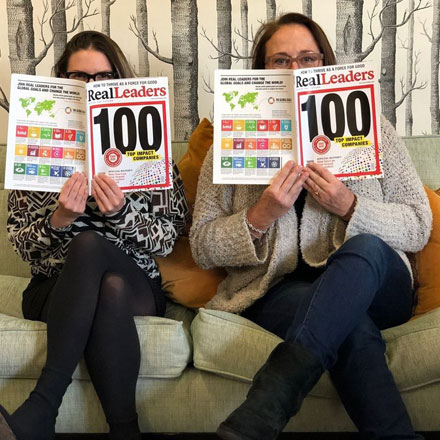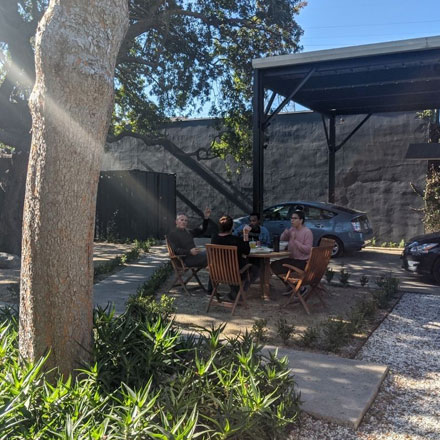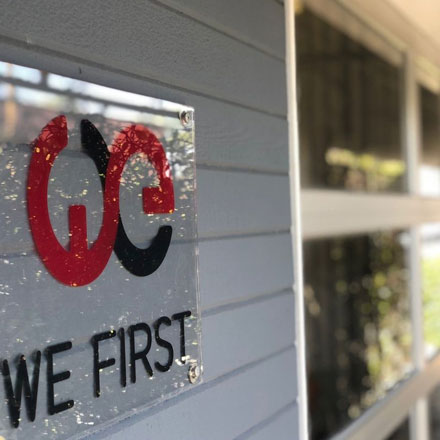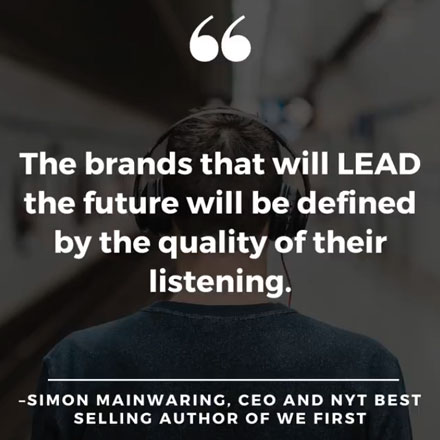
Purpose At Work
Purpose At Work: How Urgency With Optimism Can Drive Major, Positive Change In 2022
Like everyone, I’m looking back on the last year and looking forward to the one coming up. A great place to start is here in this column and all the examples of companies and entrepreneurs driving inspiring positive change. It seems to have been an oasis of hope amid a bevy of bad news. Does that make me a Pollyanna?
With increasing inflation, supply chain snafus, and a virulent new strain of a virus that’s already way overstayed its welcome, it’s easy to find oneself more than glum.
What does the business sector and wider world have to look forward to, after all? The undeniable failure of our natural ecosystems will continue to challenge humanity, erode economic viability, and cost literal lives if we continue with “business-as-usual.” Meantime, the gaps in wealth, education, social justice, and healthcare can’t yawn any wider without swallowing whole swaths of humanity. Such challenges are “comorbidities,” inextricably interwoven conditions, each exacerbating all others.
Given the enormity and urgency of these compounding crises, it’s easy to get overwhelmed, pessimistic, or skeptical as to viable solutions.
But I’ve got news for you. I am optimistic. And it’s because I’ve been collecting data and real-world case studies of purpose work by top sustainable and regenerative brands, many of which I’ve profiled right here — all of which compel me to be optimistic.
This year, in researching my newly released book and compiling worthy brands for this column, I dove deep into companies such as PepsiCo, Home Depot, Lyft, and Starbucks — as well as smaller, innovative businesses and startups such as Freight Farms, Huel, and AppHarvest — whose leaders, employees, and communities have responded directly — and collaboratively — to the climate emergency and other complex crises with creative, effective solutions, while simultaneously fortifying their brand reputation and business growth.
Without exception, all the Lead With We companies I’ve reported on here have proven outsize growth for their stage by at least one metric, and typically several.
In short: action on environmental, social, and economic challenges benefits business.
I mean action by both business leaders and consumers (a massively underrated force for leading critical change toward a better, more sustainable world).
To begin with, these businesses and their brand communities share disruptive mindsets and behaviors. They haven’t retreated from challenges (a likely response to pessimism). They haven’t taken their ball and skulked home. Instead, they’ve rightly recognized the climate emergency and other global challenges as myriad marketplace opportunities in disguise: These businesses “risk” taking direct action, even if potentially costly, and gain major advantages over laggers. How?
With each company and its consumer community radically reimagining and reengineering business based on the idea of collectivized purpose, showing how we live, work, and grow together in new ways that restore and protect the natural (and social) systems on which all our futures depend. They all Lead With We in different but analogous and complementary ways.
They teach us that if you’re a consumer and you’re not keen on the way a business is responding (or not responding) to an issue about which you care deeply, you shouldn’t underestimate your personal power to influence its actions and attitudes. Movements grow and gain momentum one person at a time. One person opening (or closing) their wallet. One person posting a comment on social media. One person spreading the word to another about the relative merits (or demerits) of a brand.
And business leaders learn from them that if you don’t like risk, you’re really going to hate irrelevance. If you think you can still play Switzerland and not take a stand — even on hot-button issues such as abortion, marriage equity, or gun control — guess again. Because not taking a stand is taking a stand. Consumers view neutrality as complicity.
In studying all the businesses I wrote about in 2021, I find another amazing common thread: The strategic secret that these companies and their consumers leverage is prioritizing optimism within their shared sense of urgency. In other words, both sides recognize the importance of, and possibilities for, making major positive changes through economic interactions.
With this dual mindset — the problems are real but real change is imminent — both internal and external forces get marshaled to solve key problems creatively and collaboratively. Combining a real, scientific, and visceral understanding of the gravity of this problem — e.g., that the world’s at an environmental “Code Red” — with a simultaneous hopeful and expectant attitude that We, together — and only together — can and will solve our looming catastrophes.
Visionary, radical solutions at scale are only possible when business learns to Lead the widest We of stakeholders through effective community- and movement building.
As a We, each of these vanguard companies and their communities further aligns their unique and core purposes across business at large, thus increasing their potential impact across all of society. In every case, their authentic and differentiating purpose informs all departments, product and service development, strategy, R&D, and marketing through a three-step culture-building process:
- Codify by listening to constituents;
- Communicate by effective internal storytelling that celebrates employee and partner impact on the environment or other concerns; and
- Collaborate unabated, authentically acting, honestly auditing, and transparently sharing all progress externally.
Combined then, the constellation of differing but corresponding purposes among collaborators then constitutes the larger business-wide and global movement that embodies the same necessities (urgency + optimism to respond to, for example, the climate emergency or racial- and gender inequity). It then employs a prescription for extending the urgency, optimism, and impact to brand ambassadorship and other community architecture tactics. In the end, we get a “movement of movements” that can dramatically alter the climate emergency, economic disparities, and other crises, in favor of the collective good.
Like all the companies I featured here in “Purpose At Work” this year, the most impactful businesses and brand communities don’t technically transact — they transform. They don’t strictly sell — they share stories. They don’t merely market — they build movements.
All arising out of the psychology of urgency + optimism, the key unlock for accelerated impact at scale across talent, innovation, and profit. Action assuages fear — especially when We undertake it together.
It’s happening all over the world: Companies like Colombia’s Daabon, the Netherland’s Vanderlande, and Spain’s Acciona are thriving by creative collaborations, such as signing on to the cross-sector Climate Pledge, allying with the “clean” initiatives of their industries, and innovating tech and solutions through pre-competitive collaborations. And all of this creates new revenue-generating prospects from the estimated $12 trillion opportunity inherent in the SDGs and wider ESG needs, with the climate emergency front and center.
On the strength of that optimism, companies are enlisting the personal agency of millions of their collective employees, customers, consumers, supply chain partners, investors, and related social movements, all acting as force multipliers of their impact on the strength of their common awareness of the global climate emergency and social challenges, and collective sense that We can and must fix this. Companies large and small, from Walmart, Nestle and PepsiCo to Cotopaxi, Thrive Market, and Impossible Foods are building powerful brand communities full of optimistic advocates.
This year’s archive of “Purpose At Work” proves that it’s the ability to maintain these two seemingly dissonant ideas — urgency plus optimism — simultaneously, that makes the solutions we need from business not only possible but almost inevitable. That’s great cause for hope as we turn the page on 2021 and seize the impact opportunity that is inherent in the new year.
Follow me on Twitter or LinkedIn. Check out my website or some of my other work here.





